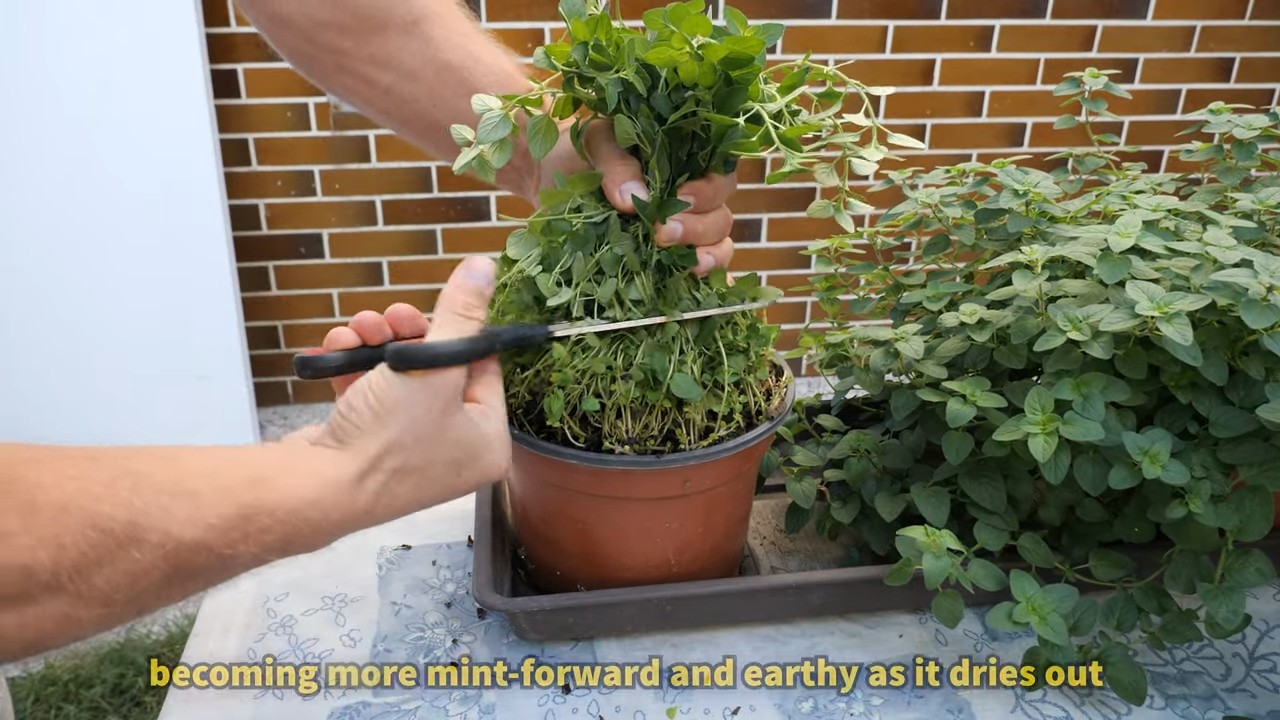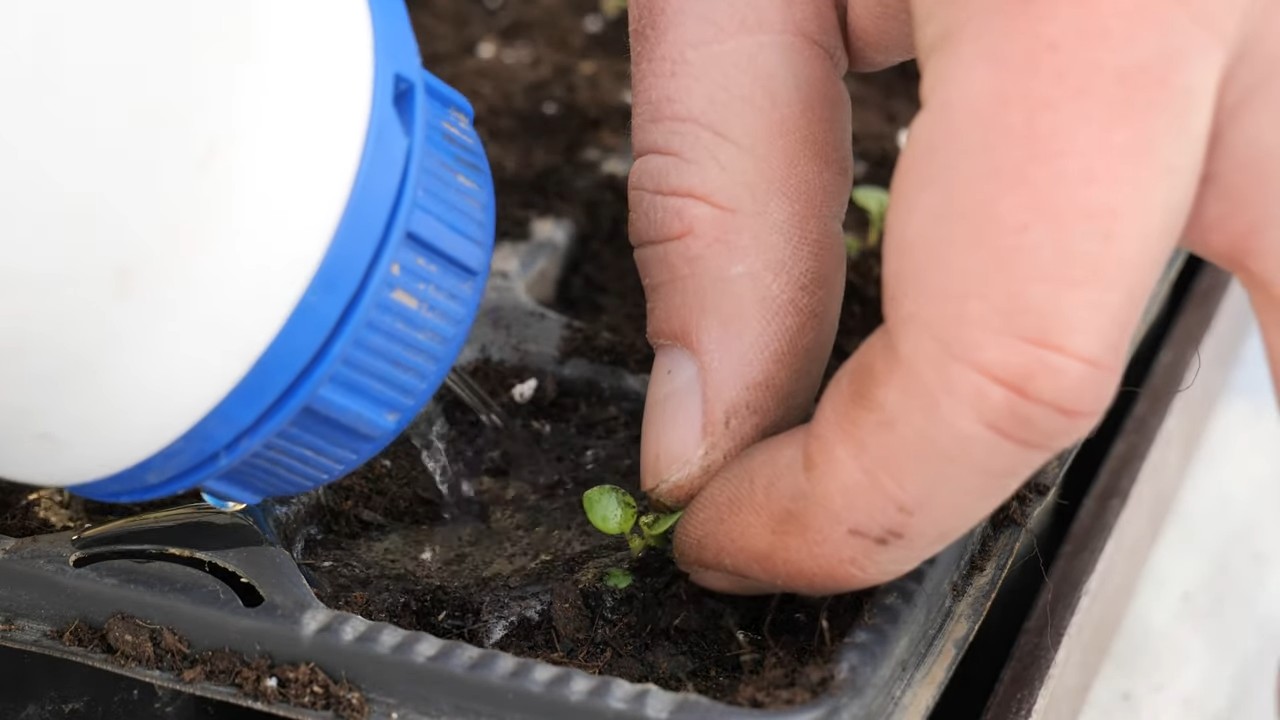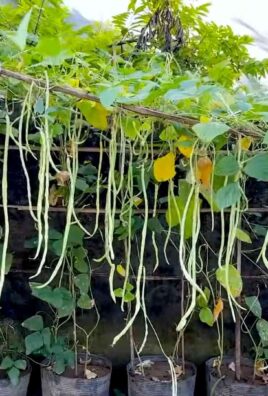Grow Oregano Indoors and unlock a world of fresh, aromatic flavor right at your fingertips! Imagine stepping into your kitchen and snipping off sprigs of vibrant, fragrant oregano to elevate your pasta sauce, season your grilled chicken, or infuse your homemade pizza with an authentic Mediterranean zest. No more last-minute grocery store runs or settling for dried herbs that lack the punch of the real deal.
For centuries, oregano has been cherished not only for its culinary prowess but also for its medicinal properties. Ancient Greeks and Romans revered it as a symbol of joy and happiness, using it in everything from perfumes to healing balms. Today, we can easily tap into this rich history by cultivating our own oregano indoors.
But why should *you* learn to grow oregano indoors? Well, let’s face it: not everyone has a sprawling garden or the perfect outdoor climate. Plus, having fresh herbs readily available is a game-changer for any home cook. This DIY guide will walk you through simple, effective techniques to successfully cultivate oregano in the comfort of your own home, regardless of your gardening experience. I’m excited to share these tips and tricks with you, so you can enjoy the delightful taste and aroma of homegrown oregano year-round!

Growing Oregano Indoors: A Beginner’s Guide
Hey there, fellow plant enthusiasts! Ever dreamt of having fresh, fragrant oregano right at your fingertips, no matter the season? Well, you’re in the right place! I’m going to walk you through the surprisingly simple process of growing oregano indoors. Trust me, even if you think you have a black thumb, you can totally do this. Let’s get started!
What You’ll Need
Before we dive in, let’s gather our supplies. Having everything ready will make the process smooth and enjoyable. Here’s what you’ll need:
* **Oregano Seeds or a Starter Plant:** You can start from seeds, which is more budget-friendly, or get a small oregano plant from a local nursery for quicker results. I personally prefer starting from seeds – it’s so rewarding to watch them sprout!
* **Small Pots or Seed Trays:** If you’re starting from seeds, you’ll need small pots or seed trays. Make sure they have drainage holes!
* **Larger Pot (for transplanting):** Once your seedlings are big enough, you’ll need a larger pot (at least 6 inches in diameter) for them to grow in.
* **Well-Draining Potting Mix:** This is crucial! Oregano doesn’t like soggy roots. A mix specifically designed for herbs or vegetables works great.
* **Grow Lights (Optional, but Recommended):** While oregano loves sunlight, it can be tricky to provide enough indoors, especially during winter. Grow lights will ensure your oregano gets the light it needs to thrive.
* **Watering Can or Spray Bottle:** For gentle watering.
* **Scissors or Pruning Shears:** For harvesting and trimming.
* **Small Shovel or Trowel:** For transplanting.
* **Fertilizer (Optional):** A balanced liquid fertilizer can give your oregano a boost, but it’s not strictly necessary.
Starting from Seeds: A Step-by-Step Guide
Okay, let’s get our hands dirty! Starting from seeds takes a little patience, but it’s totally worth it.
1. **Prepare Your Seed Trays or Small Pots:** Fill your seed trays or small pots with well-draining potting mix. Gently pat down the soil, but don’t pack it too tightly.
2. **Sow the Seeds:** Oregano seeds are tiny, so sprinkle them sparingly over the surface of the soil. You don’t want to overcrowd them.
3. **Cover the Seeds Lightly:** Gently cover the seeds with a very thin layer of potting mix. Just a dusting will do.
4. **Water Gently:** Use a spray bottle to mist the soil. You want to moisten the soil without disturbing the seeds.
5. **Provide Warmth and Light:** Place the seed trays or pots in a warm location (around 70-75°F or 21-24°C). If you have grow lights, position them a few inches above the soil surface. If not, find a sunny windowsill.
6. **Keep the Soil Moist:** Check the soil daily and mist it whenever it feels dry to the touch. Don’t let it dry out completely, but avoid overwatering.
7. **Wait for Germination:** Be patient! Oregano seeds typically germinate in 10-14 days.
8. **Thin the Seedlings (If Necessary):** Once the seedlings have sprouted and have a few sets of true leaves (the leaves that look like miniature oregano leaves), you may need to thin them out. If you have multiple seedlings growing in one pot, carefully snip off the weaker ones at the soil line, leaving the strongest seedling to grow.
Transplanting Your Oregano Seedlings
Once your seedlings are big enough, it’s time to give them more room to grow!
1. **Choose a Larger Pot:** Select a pot that’s at least 6 inches in diameter. Make sure it has drainage holes!
2. **Prepare the Pot:** Fill the pot with well-draining potting mix.
3. **Gently Remove the Seedling:** Carefully loosen the soil around the seedling in its small pot or seed tray. Gently lift the seedling out, being careful not to damage the roots.
4. **Plant the Seedling:** Make a small hole in the center of the soil in the larger pot. Place the seedling in the hole and gently backfill with potting mix.
5. **Water Thoroughly:** Water the transplanted seedling thoroughly, until water drains out of the bottom of the pot.
6. **Provide Light and Warmth:** Place the pot in a sunny location or under grow lights.
Caring for Your Indoor Oregano Plant
Now that your oregano is happily transplanted, let’s talk about how to keep it thriving.
* **Light:** Oregano needs at least 6-8 hours of sunlight per day. If you’re using grow lights, keep them on for 12-14 hours per day.
* **Watering:** Water your oregano when the top inch of soil feels dry to the touch. Avoid overwatering, as this can lead to root rot. Let the water drain completely from the bottom of the pot.
* **Temperature:** Oregano prefers temperatures between 65-75°F (18-24°C).
* **Humidity:** Oregano doesn’t need high humidity, so normal indoor humidity levels are fine.
* **Fertilizing (Optional):** If you want to give your oregano a boost, you can fertilize it every 2-4 weeks with a balanced liquid fertilizer. Follow the instructions on the fertilizer label. I usually dilute the fertilizer to half strength to avoid burning the roots.
* **Pruning:** Regular pruning is essential for keeping your oregano plant healthy and productive. Pinch off the tips of the stems to encourage bushier growth. You can also remove any yellow or brown leaves.
Harvesting Your Oregano
The best part! You can start harvesting your oregano once the plant is about 4-6 inches tall.
1. **Use Scissors or Pruning Shears:** Use clean scissors or pruning shears to snip off stems of oregano.
2. **Harvest Regularly:** Regular harvesting encourages the plant to produce more leaves.
3. **Harvest in the Morning:** The best time to harvest oregano is in the morning, after the dew has dried but before the sun gets too hot. This is when the leaves have the most flavor.
4. **Drying Oregano (Optional):** If you have more oregano than you can use fresh, you can dry it for later use. To dry oregano, tie the stems together in small bundles and hang them upside down in a cool, dry, and well-ventilated place. You can also dry oregano in a dehydrator or in the oven on low heat.
Troubleshooting Common Problems
Even with the best care, you might encounter a few problems along the way. Here are some common issues and how to deal with them:
* **Yellowing Leaves:** This can be caused by overwatering, underwatering, or nutrient deficiencies. Check the soil moisture and adjust your watering accordingly. If you suspect a nutrient deficiency, try fertilizing with a balanced liquid fertilizer.
* **Leggy Growth:** This is usually caused by insufficient light. Make sure your oregano is getting enough sunlight or grow light. Pruning can also help to encourage bushier growth.
* **Pests:** Oregano is relatively pest-resistant, but it can sometimes be affected by aphids or spider mites. If you notice pests, try spraying the plant with insecticidal soap.
* **Root Rot:** This is caused by overwatering. Make sure your pot has drainage holes and that you’re not watering too frequently. If you suspect root rot, you may need to repot the plant in fresh potting mix.
Starting from a Starter Plant
If you’re not feeling the seed-starting route, buying a starter plant is a great option! The process is even simpler:
1. **Choose a Healthy Plant:** Look for a plant with vibrant green leaves and no signs of pests or disease.
2. **Repot (If Necessary):** If the plant is root-bound (the roots are circling around the bottom of the pot), you’ll need to repot it into a larger pot. Follow the transplanting instructions above.
3. **Provide Light, Water, and Warmth:** Follow the same care instructions as for seedlings.
Enjoy Your Homegrown Oregano!
And there you have it! You’re now equipped with the knowledge to grow your own oregano indoors. With a little care and attention, you’ll be enjoying fresh, flavorful oregano in your cooking all year round. Happy gardening!

Conclusion
So, there you have it! Growing oregano indoors is not only achievable, but it’s also a rewarding experience that brings the fresh, vibrant flavors of the Mediterranean right into your kitchen. Forget those sad, dried-up herb jars from the supermarket – imagine the satisfaction of snipping off sprigs of fragrant, homegrown oregano whenever you need it.
This DIY trick is a must-try for several compelling reasons. First and foremost, it guarantees a constant supply of fresh oregano, regardless of the season. No more last-minute dashes to the store or settling for subpar substitutes. Secondly, it’s incredibly cost-effective. A single packet of oregano seeds or a small starter plant can yield a continuous harvest for months, even years, saving you money in the long run. Thirdly, and perhaps most importantly, growing your own herbs allows you to control the quality and source of your food. You can be confident that your oregano is free from harmful pesticides and chemicals, ensuring a healthier and more flavorful culinary experience.
But the benefits don’t stop there. Growing oregano indoors is also a fantastic way to add a touch of greenery to your home, creating a more inviting and vibrant atmosphere. The aromatic scent of oregano can also be incredibly therapeutic, helping to reduce stress and promote relaxation.
Looking for variations? Absolutely! Consider experimenting with different varieties of oregano, such as Greek oregano (known for its strong, pungent flavor) or Italian oregano (which is slightly milder and sweeter). You can also try growing oregano in different types of containers, from terracotta pots to repurposed jars, to add a personal touch to your indoor garden. For a truly unique experience, try companion planting your oregano with other herbs like basil or thyme, creating a miniature herb garden that thrives together. You can even propagate your oregano by taking cuttings and rooting them in water, expanding your herb collection without spending any extra money.
We’ve covered the essentials, from choosing the right pot and soil to providing adequate light and water. We’ve also addressed common challenges like pests and diseases, offering practical solutions to keep your oregano plants healthy and thriving. Now, it’s your turn to put these tips into practice and experience the joy of growing your own fresh herbs.
Don’t be intimidated if you’re a beginner gardener. Growing oregano indoors is surprisingly easy, and the rewards are well worth the effort. Start small, be patient, and don’t be afraid to experiment. With a little bit of care and attention, you’ll be harvesting your own delicious oregano in no time.
So, what are you waiting for? Grab a pot, some soil, and a packet of oregano seeds, and embark on this exciting culinary adventure. We’re confident that you’ll be amazed by the results.
We encourage you to try this DIY trick and share your experience with us. Let us know how your oregano plants are growing, what varieties you’re experimenting with, and any tips or tricks you’ve discovered along the way. Share your photos and stories on social media using [Your Hashtag Here], and let’s inspire others to embrace the joys of indoor herb gardening. Happy growing!
Frequently Asked Questions (FAQ)
1. What is the best type of oregano to grow indoors?
The best type of oregano to grow indoors depends on your personal taste and culinary preferences. Greek oregano (Origanum vulgare hirtum) is a popular choice due to its strong, pungent flavor, which is ideal for Mediterranean dishes. Italian oregano (Origanum x majoricum) is another excellent option, offering a slightly milder and sweeter flavor. Other varieties to consider include golden oregano (Origanum vulgare ‘Aureum’), which adds a splash of color to your indoor garden, and creeping oregano (Origanum vulgare prostratum), which is perfect for hanging baskets. Experiment with different varieties to find the one that best suits your needs.
2. How much sunlight does indoor oregano need?
Oregano thrives in bright, sunny conditions. Ideally, your indoor oregano plant should receive at least 6-8 hours of direct sunlight per day. If you don’t have a south-facing window that provides sufficient sunlight, consider supplementing with a grow light. Place the grow light about 6-12 inches above the plant and keep it on for 12-14 hours per day. Insufficient sunlight can lead to leggy growth and a less flavorful herb.
3. What type of soil is best for growing oregano indoors?
Oregano prefers well-draining soil that is slightly alkaline. A good potting mix for oregano should consist of equal parts potting soil, perlite, and compost. The potting soil provides essential nutrients, the perlite improves drainage, and the compost adds organic matter. Avoid using heavy, clay-based soils, as they can retain too much moisture and lead to root rot.
4. How often should I water my indoor oregano plant?
Water your oregano plant when the top inch of soil feels dry to the touch. Avoid overwatering, as this can lead to root rot. When watering, water thoroughly until water drains out of the bottom of the pot. Allow the soil to dry out slightly between waterings. During the winter months, when growth slows down, you may need to water less frequently.
5. How do I fertilize my indoor oregano plant?
Oregano is not a heavy feeder, so you don’t need to fertilize it frequently. However, a light feeding every few weeks during the growing season (spring and summer) can help promote healthy growth. Use a balanced liquid fertilizer diluted to half strength. Avoid over-fertilizing, as this can lead to leggy growth and a less flavorful herb.
6. How do I harvest oregano from my indoor plant?
You can start harvesting oregano leaves once the plant is about 6 inches tall. To harvest, simply snip off the stems with scissors or pruning shears. Avoid removing more than one-third of the plant at a time, as this can stress the plant. Regular harvesting encourages bushier growth and a more abundant harvest. The best time to harvest oregano is in the morning, after the dew has dried.
7. How do I deal with pests and diseases on my indoor oregano plant?
Indoor oregano plants are generally resistant to pests and diseases, but they can occasionally be affected by aphids, spider mites, or powdery mildew. To prevent pests and diseases, keep your oregano plant clean and well-ventilated. If you notice any pests, try spraying the plant with a strong stream of water or using insecticidal soap. For powdery mildew, improve air circulation and treat with a fungicide if necessary.
8. Can I propagate oregano from cuttings?
Yes, oregano can be easily propagated from cuttings. To propagate oregano, take a 4-6 inch cutting from a healthy stem. Remove the lower leaves and place the cutting in a glass of water. Change the water every few days. After a few weeks, roots will begin to form. Once the roots are about an inch long, you can transplant the cutting into a pot filled with well-draining soil.
9. My oregano plant is getting leggy. What should I do?
Leggy growth in oregano is often caused by insufficient sunlight. Move your plant to a sunnier location or supplement with a grow light. You can also prune back the leggy stems to encourage bushier growth.
10. How do I overwinter my indoor oregano plant?
Oregano is a perennial herb, so it can survive for several years if properly cared for. During the winter months, reduce watering and fertilization. Keep your plant in a cool, bright location. You may also need to prune back the plant to remove any dead or damaged growth.




Leave a Comment